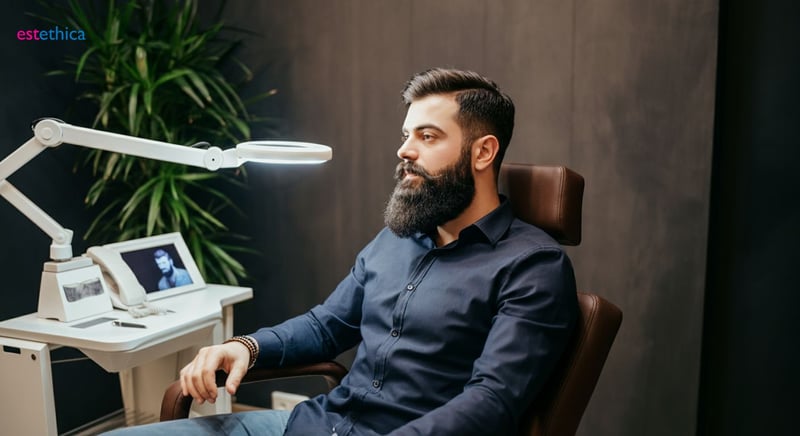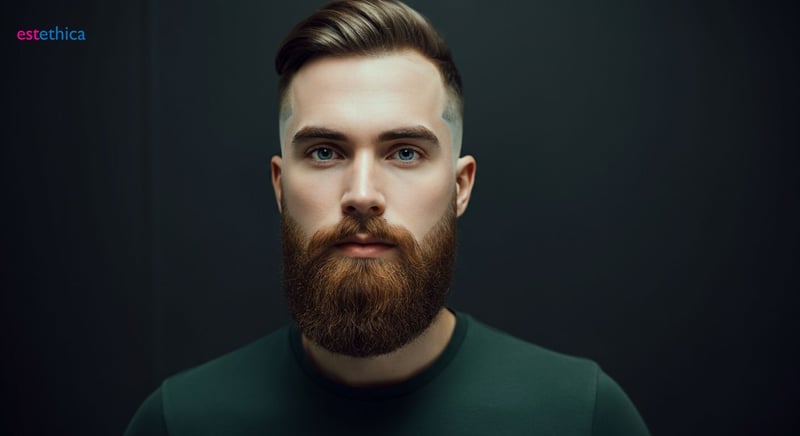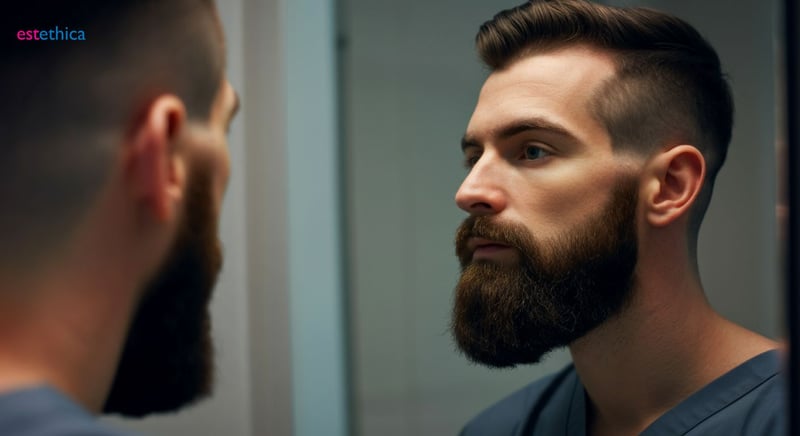Unlock Your Dream Beard: The Ultimate Facial Hair Transplant Guide
Discover how a professionally executed beard transplant can redefine your look and boost confidence. Embrace the future of facial hair with techniques like FUE and FUT.
Facial hair has been a symbol of masculinity and style for centuries. With trends constantly evolving, many individuals are turning to modern solutions to achieve their desired beard aesthetic. Advanced techniques such as Beard Transplants provide the opportunity for men to redefine their look and boost their confidence. This guide will walk you through everything you need to know about Facial Hair Transplantation, exploring both short-term recovery and long-term results.
Beard Implants: Achieving the Perfect Look You've Always Wanted
The Transformative Impact of Beard Implants
Beard implants present a pivotal advancement in cosmetic procedures. Unlock Your Dream Beard is now more attainable than ever, thanks to developments in hair transplant technology. A facial hair transplant can redefine a man’s appearance, filling in sparse areas and creating a denser, more appealing beard. It’s noted that some clinics have reported up to a 75% increase in patient confidence following a successful beard transplant.
Consider the possibilities with a well-executed beard implants procedure. Imagine a software engineer in Miami who always wanted a Viking-style beard but struggled with patchy growth, or a London-based musician who desired a fuller goatee to match his stage presence. There's also the example of a chef in Istanbul eager to cultivate a distinguished look. Beard implants allow men to express themselves authentically, aligning their external appearance with their internal identity.
Understanding the Follicular Grafting Process
The process of Follicular Unit Extraction beard involves carefully extracting individual hair follicles, usually from the scalp, and implanting them into the beard area. This technique ensures that the transplanted hairs blend seamlessly with existing facial hair, creating a natural and uniform look. Experienced beard surgeon understand the nuances of facial anatomy, ensuring optimal placement for density. One key aspect is that the angle and direction of each hair grafts for beard are meticulously controlled to mimic natural beard growth patterns.
- Precision and Artistry: The surgeon's skill in placing the grafts is vital for achieving a natural-looking beard.
- Customization: The procedure can be tailored to meet individual aesthetic goals, from a subtle enhancement to a complete beard reconstruction.
- Long-Term Results: Once the transplanted follicles establish, they grow just like natural facial hair, providing a permanent solution for beard enhancement.

Facial Hair Transplant Techniques: FUE vs. FUT - Which Is Right for You?
Evaluating FUE and FUT for Your Beard Transplant
When considering a beard transplant, understanding the nuances between Follicular Unit Extraction (FUE) and Follicular Unit Transplantation (FUT) is crucial. FUE involves extracting individual follicular units directly from the donor area, typically the scalp, leaving tiny, almost invisible scars. This method is favored for its minimally invasive nature and shorter recovery time. A survey indicates that approximately 60% of patients opt for FUE due to its less noticeable scarring.
Conversely, FUT involves removing a strip of tissue from the donor area, from which individual follicular units are then harvested. While FUT can yield a higher number of grafts in a single session, it results in a linear scar. Deciding between FUE and FUT often depends on your specific needs and aesthetic goals. For instance, someone who prefers wearing their hair short might lean towards FUE to avoid a visible scar. A prospective client in Istanbul may prioritize minimal downtime, while another might focus on maximizing graft yield for density.
Factors Influencing Your Choice of Technique
Several elements should guide your decision when choosing between FUE and FUT for a facial hair transplant. Skin elasticity plays a significant role; individuals with tighter skin might find FUE more suitable, as it doesn't require the same degree of scalp manipulation as FUT. Expectations regarding density are also important. FUT can potentially provide a greater density in a single session, which might be preferable for those seeking a particularly full beard.
- Scarring Expectations: For those concerned about scarring, FUE is typically the preferred option due to its minimally invasive nature.
- Graft Quantity Needs: Individuals needing a large number of grafts might benefit from FUT, which can often provide a higher yield in one session.
- Recovery Time Considerations: FUE generally offers a quicker recovery period, making it ideal for those with time constraints.

Beard Transplant Recovery: Expert Tips for a Smooth and Successful Process
Optimizing Your Recovery After a Beard Transplant
Recovering well from a beard transplant is key to achieving the desired fullness and natural look. Typically, the initial healing phase takes about 2 to 4 weeks, during which the transplanted follicles begin to settle and establish themselves. Adhering to post-operative care is crucial. Clinics like estethica global emphasize the importance of keeping the transplanted area moisturized and protected from direct sunlight. Proper care during this period dramatically affects the success of the facial hair transplant, with studies showing that vigilant aftercare can raise the graft survival rate by up to 20%.
Consider the recovery journeys of various individuals. For example, a construction worker in Miami might need to take extra precautions to avoid exposing his new beard implants to dust and sun. A teacher in London might focus on incorporating aftercare into his daily routine to ensure consistent care, while a chef in Istanbul would prioritize hygiene to prevent any infection during the critical healing phase. The expertise of a skilled beard surgeon can also greatly improve the comfort and speed of recovery.
Essential Aftercare Steps for a Healthy Beard
Following the clinician's advice is essential for a successful recovery from a facial hair transplant. These guidelines typically include gentle cleansing of the transplanted area, avoiding strenuous activities, and using recommended creams or lotions. For instance, patients are advised to avoid shaving for at least two weeks post-procedure to allow the follicles to firmly anchor. It’s also important to be gentle when drying your face, opting for dabbing rather than rubbing, to prevent dislodging the new grafts.
- Gentle Cleansing: Use a mild, pH-balanced cleanser to keep the area clean without irritating the new grafts.
- Sun Protection: Apply a high-SPF sunscreen to shield the transplanted area from harmful UV rays, which can impede healing.
- Moisturization: Regularly apply a recommended moisturizer to prevent dryness and promote skin health around the transplanted follicles.
The recovery process can be significantly enhanced with specialized products, such as estethica's patented creams, designed to soothe and heal the skin, ultimately encouraging healthier hair grafts for beard. Proper aftercare not only speeds up recovery but also maximizes the chances of a successful and natural-looking result.
- Avoid Direct Sunlight: Limit exposure to direct sunlight to protect the sensitive skin and newly implanted follicles.
- Stay Hydrated: Drink plenty of water to keep your skin hydrated and promote overall healing.
- Follow Medication Schedule: Adhere strictly to any prescribed medications, such as antibiotics or anti-inflammatory drugs, to prevent infection and reduce swelling.

Is a Beard Transplant Permanent? Understanding Long-Term Growth and Results
The Longevity of Beard Transplant Results
One of the most appealing aspects of a beard transplant is its potential for providing permanent results. When executed with precision, the procedure offers a lasting solution for those seeking to enhance their facial hair. The transplanted follicles are generally resilient to factors that cause common hair loss, such as sensitivity to Dihydrotestosterone (DHT). These hair grafts for beard maintain their growth characteristics.
Patients can anticipate a natural-looking beard that fills in previously sparse areas, offering a durable improvement to their physical appearance. Think of a facial reconstruction surgery that restores a man’s confidence, similar to how beard implants rebuild his facial aesthetics. Consider a London-based actor, whose enhanced beard significantly boosted his on-screen presence. Another example is a businessman in Miami, who found that his new beard added a distinguished edge to his professional image.
Factors Influencing the Permanence of Your Transplant
The enduring success of a beard transplant hinges on several key factors. The expertise of the beard surgeon performing the procedure, the quality of the donor hair, and how well the patient adheres to post-operative care all play critical roles. A clinic with a track record of successful beard transplant Istanbul procedures is essential. The transplanted hair typically retains the characteristics of where it was taken from, continuing to grow as normal facial hair.
- DHT Resistance: Follicles from DHT-resistant areas ensure the transplanted hair is less susceptible to typical hair loss patterns.
- Surgical Precision: Accurate placement and angle of the grafts contribute significantly to natural growth and long-term satisfaction.
- Post-operative Care: Strict adherence to aftercare guidelines maximizes graft survival rates and promotes healthy growth.
- Proper Technique: Leveraging advanced methods like Follicular Unit Extraction beard ensures minimal trauma to the follicles, boosting survival rates.
- Skillful Execution: The expertise of the surgical team in hair transplant for beard is paramount for achieving a natural and lasting outcome.
- Realistic Expectations: Understanding the potential results and committing to the necessary aftercare steps are key to long-term satisfaction with the procedure.
Advanced FUE and FUT Techniques for Natural-Looking Beard Transplants
estethica employs Follicular Unit Extraction (FUE) and Follicular Unit Transplantation (FUT) to provide tailored beard transplant solutions. FUE offers minimally invasive hair follicle extraction, while FUT allows for a higher quantity of grafts in a single session, ensuring personalized density and natural results.
estethica’s beard surgeons possess in-depth knowledge of facial anatomy and hair growth patterns, ensuring meticulous graft placement for optimal density and natural aesthetics. Their expertise enables customized beard reconstruction tailored to each patient's unique goals, enhancing facial appearance and boosting self-confidence.
Comprehensive Beard Transplant Aftercare for Successful Growth
estethica prioritizes patient safety and health by providing detailed post-operative guidelines for beard transplant recovery. These guidelines include gentle cleansing, sun protection, and moisturization, maximizing the survival rate of hair grafts and promoting healthy growth.
Patients at estethica benefit from long-lasting beard transplant results, as transplanted follicles are resilient to common hair loss factors. The skill of estethica’s surgical team in hair transplantation ensures natural and lasting outcomes, boosting patient satisfaction and facial aesthetics.
Frequently Asked Questions
What is a Beard Transplant and who is it suitable for?
What are the main techniques used in a Facial Hair Transplant: FUE vs. FUT?
How permanent is a Beard Transplant and what factors influence its success?
What does the recovery process entail after a Facial Hair transplant?
Achieve your aesthetic goals with world-class experts and cutting-edge technology at estethica.
📞 Get Your Free Consultation!